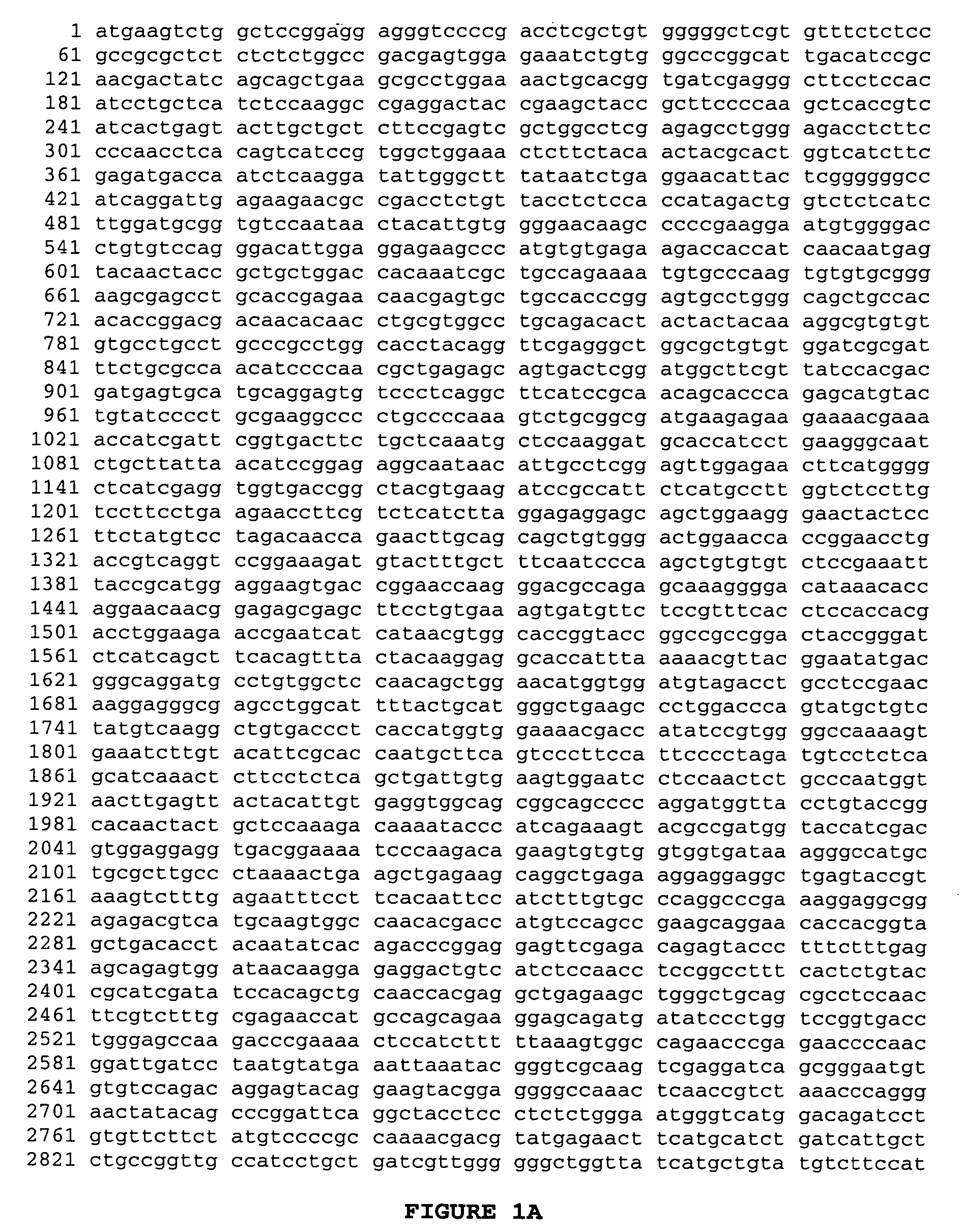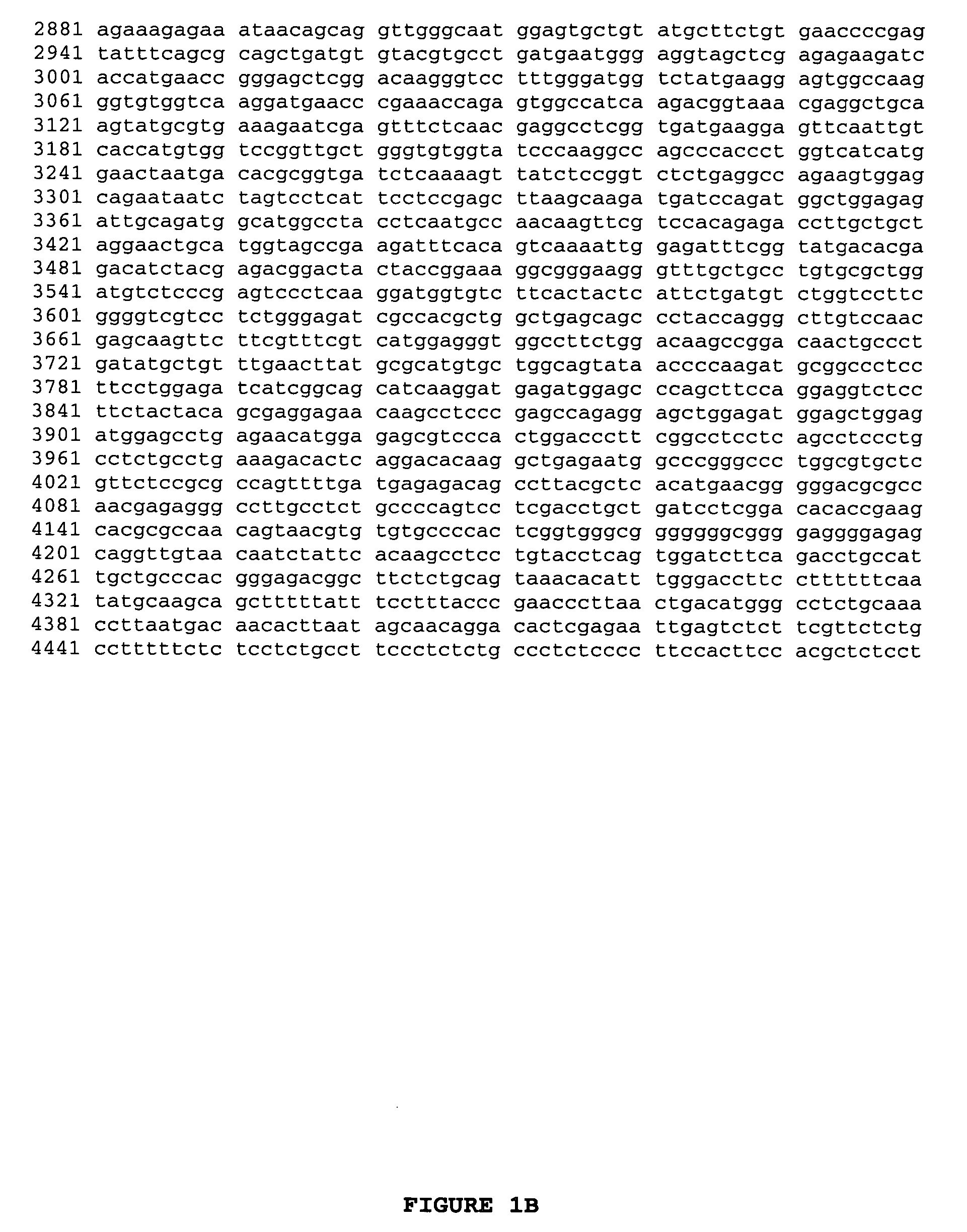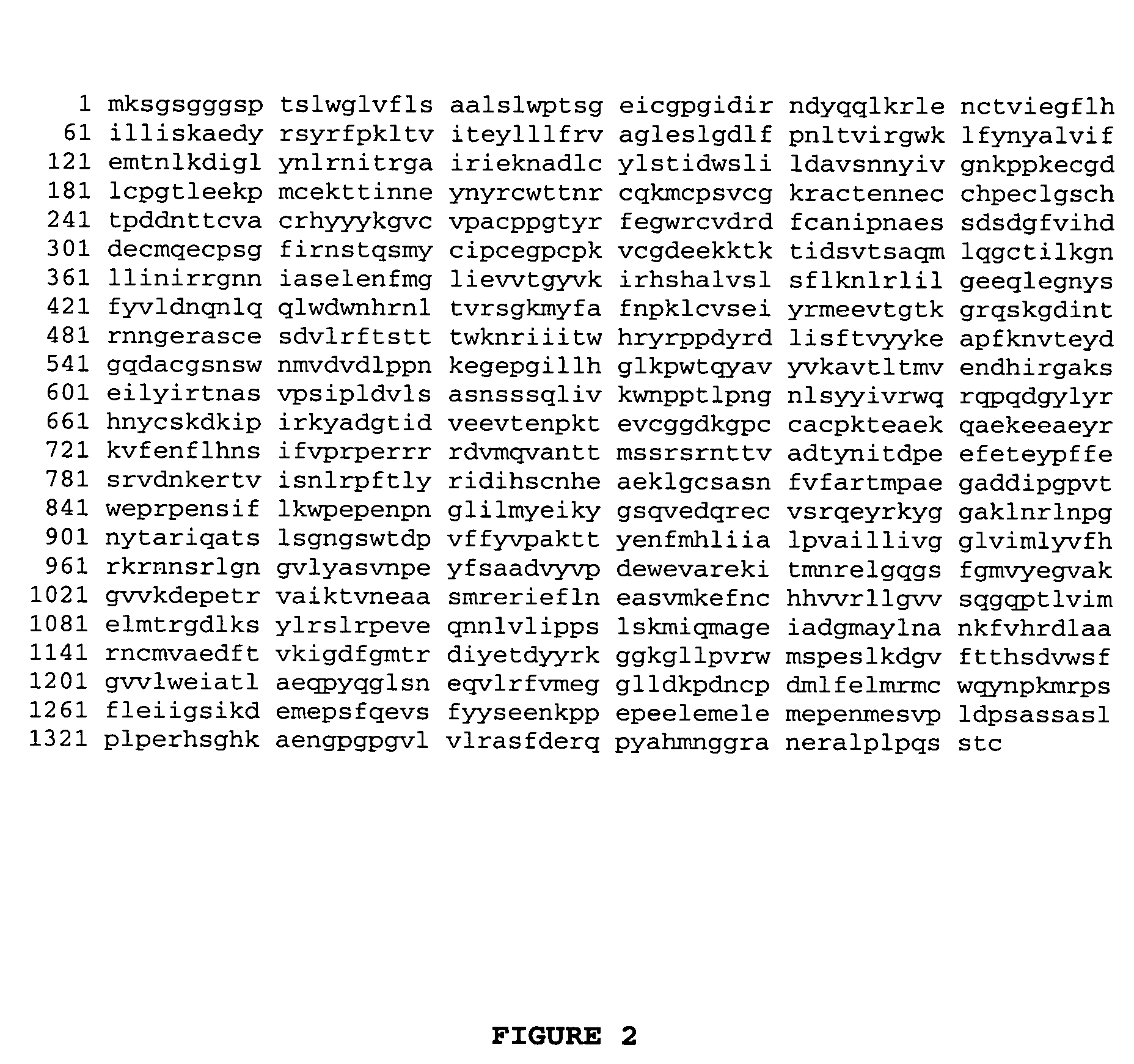Insulin-like growth factor-1 receptor (IGF-1R) polymorphic alleles and use of the same to identify DNA markers for reproductive longevity
a technology of growth factor and polymorphism, applied in the field of polymorphism of growth factor-1 receptor, can solve the problems of poor reproductive performance, decreased profitability, difficult to improve reproductive longevity through conventional breeding methods, etc., and achieve the effect of increasing the accuracy of selection and breeding methods
- Summary
- Abstract
- Description
- Claims
- Application Information
AI Technical Summary
Benefits of technology
Problems solved by technology
Method used
Image
Examples
example 1
Identify Polymorphisms at the daf-2 (Insulin-Like Growth Factor-1 Receptor) Gene in Lines of Mice Selected for Reproductive Longevity and Evaluating this Gene as Putative Candidates for DNA Markers for Reproductive Longevity in Livestock.
[0146] Materials and Methods
[0147] The mouse population: The original mouse population, which was established by Agriculture and Agri-Food Canada in Ottawa in 1965, was a cross between two strains of mice (P and Q). The P strain was a cross between three inbred lines (C3H / HeJ, C57BL / 6J, CBA / J, SWR / J) and the Q was Falconer's strain, which had a substantial heterogeneous background (Garnett and Falconer 1975). Ancestry of the Q strain goes back to 1948, with a large contribution from the ‘J’ stain (Falconer 1973). The ‘J’ strain was a heterogeneous population of mixed origin, which was made from crosses between Bateman's high-lactation line, Goodale's and MacArthur's large body weight selected lines, and four mutant stocks with the C57-BL inbred li...
example 2
Identification of Polymorphisms in the IGF-1R Gene in a Line of Pigs for the Development of DNA
[0183] Animals from a single commercial operation were used to find polymorphisms in candidate genes for reproductive longevity in pigs. Sourcing all animals from a single farm should ensure a similar environment for both high and low reproductive longevity groups. Five living sows with very high parity numbers were chosen as representing high reproductive longevity and five animals culled for reproductive reasons at low parity numbers were chosen as representing low reproductive longevity.
[0184] DNA was extracted from tissue samples from these 10 animals and the DNA used to amplify regions of candidate genes using PCR. PCR primers were designed from pig DNA sequence, or from exonic sequence of the homologous gene in other species such as mouse or human. The DNA sequence of these PCR products was then determined and the sequences compared to identify any polymorphisms. Each polymorphism ...
example 3
SNP 3832
[0223] Samples from old surviving sows and from young sows culled during the first 4 parities.
[0224] 996 sows from four different farms were genotyped and tested for the effect of SNP 3832 on the number of parities. Allele “2” was found to be positively associated with longevity. In average sows of the 22, 12 and 11 genotypes were culled after 7.4, 6.7 and 5.1 parities, respectively. The additive effect of SNP 3832 was estimated to be 1.11 / parities / allele (P=0.004) with no dominance effect. The effect is significant, but over estimated due to the data structure.
[0225] Germany (GER): Longevity (reproduction) data from sows with known pedigree with DNA samples from their sires.
[0226] Data of over 19,000 sows, daughters of 179 sires were used in the analysis. Each sire had at least 50 daughters. There are 76 litter farms represented and the litters were from 1996 to 2001. Phenotypic performance of each sire was estimated based on the daughters' performances, and genotypic d...
PUM
| Property | Measurement | Unit |
|---|---|---|
| Fraction | aaaaa | aaaaa |
| Volume | aaaaa | aaaaa |
| Volume | aaaaa | aaaaa |
Abstract
Description
Claims
Application Information
 Login to View More
Login to View More - R&D
- Intellectual Property
- Life Sciences
- Materials
- Tech Scout
- Unparalleled Data Quality
- Higher Quality Content
- 60% Fewer Hallucinations
Browse by: Latest US Patents, China's latest patents, Technical Efficacy Thesaurus, Application Domain, Technology Topic, Popular Technical Reports.
© 2025 PatSnap. All rights reserved.Legal|Privacy policy|Modern Slavery Act Transparency Statement|Sitemap|About US| Contact US: help@patsnap.com



